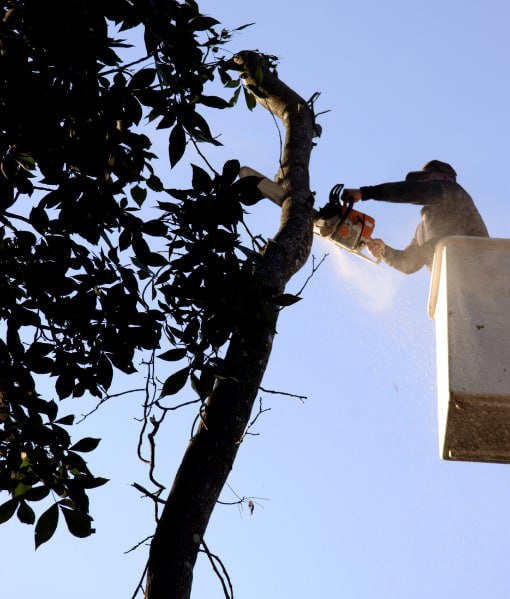Introduction: Proper tree care goes beyond aesthetics; it’s about ensuring the health and vitality of your trees. One essential aspect of tree care is pruning, which, when done correctly, can promote air circulation within the canopy. In this blog post, we’ll explore the importance of air circulation for tree health and offer tips on how to prune your trees to encourage it.

The Significance of Air Circulation:
- Disease Prevention: Adequate air circulation is crucial for preventing fungal diseases such as powdery mildew and leaf spot. Good airflow helps to keep foliage dry, making it less hospitable to disease-causing pathogens.
- Reduced Pest Pressure: Proper air circulation can deter certain pests that thrive in humid and stagnant conditions. By pruning to improve airflow, you can create a less attractive environment for these pests.
- Stronger Branches: Good air circulation can strengthen tree branches. When branches can rub against each other due to overcrowding, it can lead to damage and weakness. Pruning for better spacing can prevent this issue.
Pruning Techniques for Air Circulation:
- Thinning the Canopy: The primary method for enhancing air circulation is thinning the tree canopy. This involves selectively removing branches, particularly those crossing, touching, or densely packed. By reducing overcrowding, you allow air to flow freely through the canopy.
- Remove Dead and Diseased Branches: Dead or diseased branches hinder air circulation and pose a risk to the tree’s overall health. Prune them promptly to improve air movement and prevent the spread of disease.
- Elevating the Canopy: In some cases, raising the lower branches of a tree can improve air circulation beneath it. This can be especially beneficial for larger trees with dense canopies.
- Crown Reduction: In cases where a tree has become too tall or densely packed, crown reduction may be necessary. This involves reducing the overall size of the canopy to create better air movement.
When to Prune for Air Circulation:
The best time to prune for air circulation is during the dormant season, typically late winter or early spring, before new growth begins. However, dead or diseased branches can and should be removed at any time of the year.
Tools for Pruning:
- Pruning Shears: Ideal for small branches and precision pruning.
- Loppers: For larger branches that require more cutting force.
- Pruning Saw: Use a pruning saw for thicker branches and to make clean cuts.
- Safety Gear: Don’t forget safety equipment, including gloves, safety glasses, and a helmet for larger pruning projects.
Conclusion: Pruning to encourage air circulation is a fundamental aspect of tree care that should not be overlooked. It enhances the aesthetic appeal of your trees and plays a crucial role in promoting their health and longevity. By following the proper techniques and timing, you can ensure that your trees thrive in an environment where air circulation is optimal, reducing the risk of diseases and pests while allowing them to flourish.
Call us on: 01227 203994
Click here to find out more about Canterbury Tree Surgeons
Click here to complete our contact form and see how we can help with your tree’s needs.